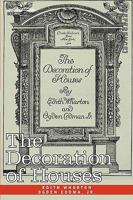Architectura: Elements of Architectural Style
Select Format
Select Condition 
You Might Also Enjoy
Book Overview
Art lovers, art students, and vacation travelers to world-famous sites will relish this beautifully bound and lavishly illustrated book. It explores and explains the architectural elements of buildings and monuments--the arches, domes, roofs, walls, entrance ways, windows, arcades, and ornamental details that give each structure its own distinctive character. Discussing these elements from both an aesthetic and a practical, structural point of view, this beautiful volume presents technical drawings as well as interior and exterior photos of architectural landmarks around the world. Structures examined range from the buildings of classical Greece and Rome to the giant modern Gateway Arch that overlooks the Mississippi River in St. Louis. Variations on architectural elements are illustrated and analyzed. For example, a discussion of the arch includes examples of-- The Roman Arch --both as incorporated into buildings and as stand-alone monuments, for example, the Arc de Triomphe in Paris The Lancet Arch --the elongated, pointed arch that distinguishes Europe's Gothic cathedrals The Ogee, or Venetian Arch --an ornate arch used, for instance, in Venice's Palace of the Doges The Four-Centered Arch --an elliptical or pointed arch used, for instance, in Moorish Islamic buildings Readers will develop a deeper understanding and appreciation of what went into the planning and construction of cathedrals, mosques, seats of government, private mansions, office blocks, apartment complexes, museums, castles, monuments, towers, and theaters. Hundreds of full-color photos and illustrations. (sidebar) Architectura Analyzes Great Buildings in Detail including-- The Hagia Sophia in Constantinople (now, Istanbul, Turkey), an edifice of the late Roman Empire. It was built as a Christian church in the fourth century by the Emperor Justinian. Transformed into a mosque in 1453 by the Ottoman Turks, it stands today as a great museum. Architectura examines the construction of this monumental building, using detailed cross-section drawings to demonstrate how ancient Roman architects and engineers built its great central dome. This description may be from another edition of this product.
Format:Hardcover
Language:English
ISBN:0764161709
ISBN13:9780764161704
Release Date:January 2008
Publisher:B.E.S. Publishing
Length:399 Pages
Weight:7.25 lbs.
Dimensions:1.6" x 10.3" x 13.4"
Customer Reviews
4 customer ratings | 4 reviews
There are currently no reviews. Be the first to review this work.









































